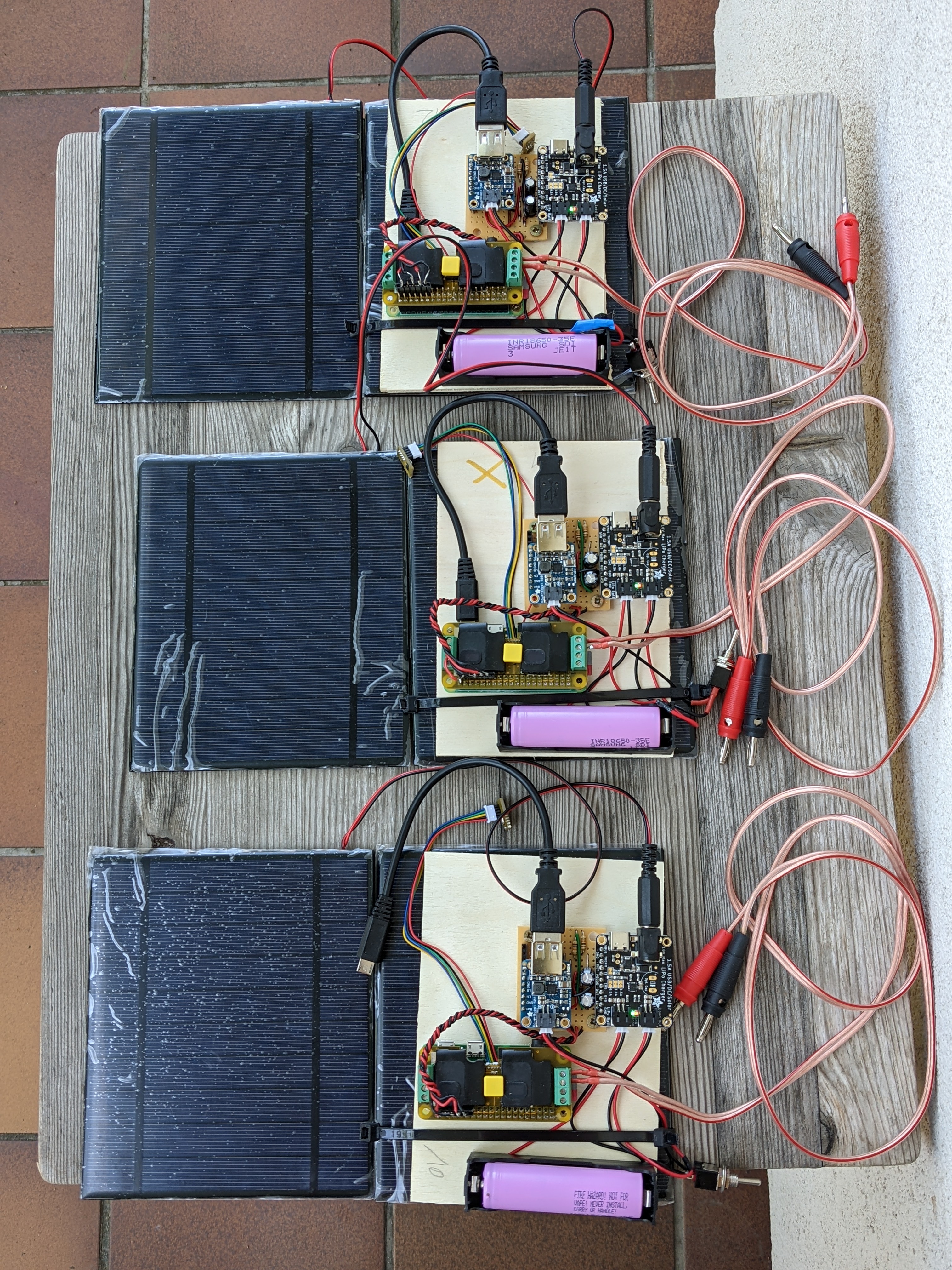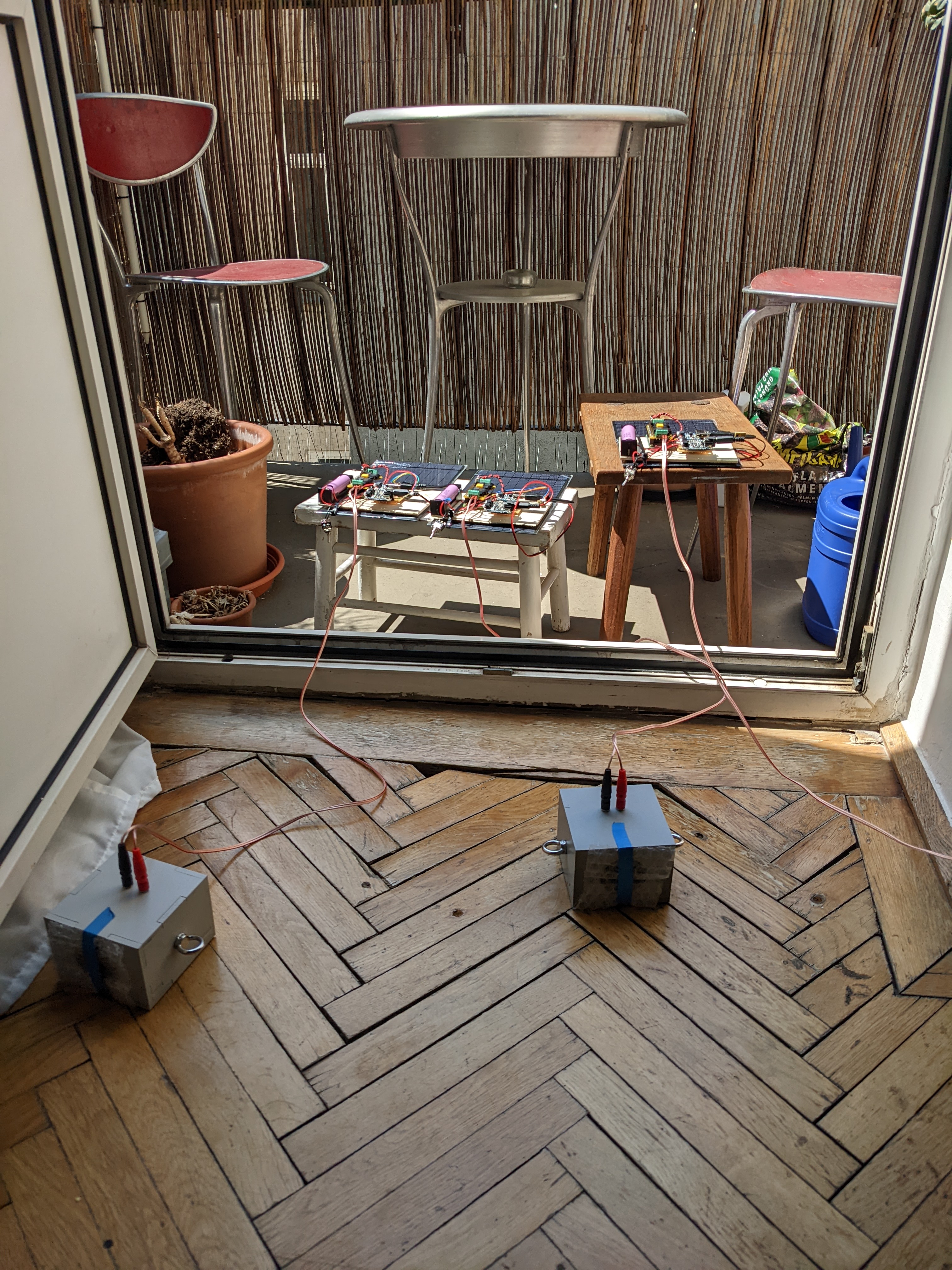Concept
What connects us, what moves and links us? The social and communicative function of music, making music or experiencing concerts collectively, is at the enmeshing element at the centre of my composition.
With reference to musical traditions of the rural area, I have chosen a yodel from Styria as sound material: “Auf da Strah”, a 4-part yodel from the Upper Enns Valley. The yodel’s singing voice can be heard both in the original and in the electronic arrangement, for which the melody is broken down into individual parts. Tonal frequency bands are created from these and move from one loudspeaker to the next. Melodic parts of the yodel can also be heard, whenever (loud) noises are heard in the surroundings. Thus, different harmonic and melodic combinations emerge - through the surrounding’s acoustic events and the five agents, the yodel regains its polyphony.
Many thanks to Ursula Scribano, who sang the yodel “Auf da Strah” and made the recording available to me
Ursula Scribano:
www.singkraft.de
www.scribanissimo.de

Thoughts on the realisation of the sound installation - a report
* To say it right away
I DON’T LIKE PUBLIC SPACE. Not for making art. Public space is always a challenge - acoustically, socially, meteorologically, electricity-wise, … and above all, difficult to plan. The conditions are unpredictable, at every time of day the place sounds different, the weather may throw a spanner in the works, there is no electricity and the neighbours complain, and only with great luck there is no wanton act of vandalism or theft.
But the public space is also always TEMPTING: it is simply beautiful to project sounds into an environment, to play with sounds specially composed for it, to place experimental music in the middle of everyday life or nature. And then LISTEN, listen in, listen to how the sounds suddenly change in the respective acoustic environment. Some of it becomes inaudible, some of it blends perfectly and even gets a special timbre, often one does not know anymore what is real and what is composed. Perhaps that is what is so fascinating about it! The possibility of “listening in” to a merging of (sound) worlds, to the CONFUSION of listening experiences, into an unexpected aural experience.
That’s why I’m facing the challenges of the public space again. Maybe after all, to move the sound installation from the art space into the public space and to confront people with it by chance, might work? Maybe there is even a positive response to it? Maybe someone hears what I thought I heard…

* The very first question, as usual
WHAT WILL SOUND? Which sound, which tone? Why exactly this sound, this noise? And what is conveyed to us with this sound? What effect has this particular sound? Does it produce associations? And if so, SHOULD THAT BE?

* Question no. 2
How can I WORK MUSICALLY with the given technical conditions?
In this project, the technical setup is clear from the beginning: I have five agents available, each of those consisting of one Raspberry Pi, one loudspeaker (so mono), one microphone, open source software, solar power. UNMODIFIABLE - it stays that way: Not to add, omit or exchange anything else, which is what one usually tends to do in the creative process, while exploring possibilities and ideas.
A LIMITATION! Nevertheless, that doesn’t make the decisions any easier, there are countless forms of realisation and unanswered questions. (One of them: What are the others doing?! They have exactly the same conditions…that will be exciting…) But: How pleasant that this time I don’t have to rack my own brains over technology.

* Many open questions
How do I establish a sonic CONNECTION between the theme of the project and the venues?
How does THE PUBLIC SPACE SOUND at the 5 different venues of the project? At different times of day, in different weather conditions? How noisy are the places themselves?
Does “my sound” fit in? Does it irritate, disturb, expand, remain in the realm of the barely perceptible and creep unnoticed INTO THE EAR?
And when the realisation becomes concrete: Does it sound continuously? Are there moments of SILENCE? How often should it sound?
How does it react to the environment (its sound), when does INTERACTION take place? When is the microphone “listening”, active, when is sound processing taking place, when is sound produced? What do I choose as a trigger for manipulation or playback, where do I set thresholds? How do I process acoustic information gathered from the environment? And why exactly in this way and not another?
And then: The whole thing happens FIVE times (I have five agents)! Do all agents do exactly the same thing? At the same time? How do they in turn influence each other? Are there controlled temporal processes or not? WHAT ROLE DOES CHANCE PLAY? How does it sound when the agents are “left to themselves”?


* Searching for sound
NORMALLY I use abstract sounds, I want to understand sound as sound, not as musical style, information carrier, harmonic structure or emotion. (One can discuss this at length, here I will keep it short). In the context of this project, however, my choice falls on a Styrian YODEL. I am struggling a bit with myself - tradition, polyphony, “real” music! And: Am I allowed to fall back on a yodel, to DIVERT it? How much do I know about it, have I done enough research to draw from this tradition-rich musical pool? To be honest, no, I haven’t (!). But basically, I am looking for a way to sonically realize my idea for this installation. The yodel fits into the concept for me.
There are lots of audio sources on the internet to experiment with. I found the website of the singer and yodeller Ursula Scribano. She provides videos that can be used to practise yodelling. For this purpose, she divides the polyphony into the various individual voices. I use a single voice, the “Ansingstimme” of the yodel, as sound material and divide it into five melodic motifs, THE NUMBER OF AGENTS of the technical setup serves as a model here. My composition emerges from the five melodic fragments of the yodel “Auf da Strah”. I ENJOY listening to the yodel. It awakens the familiar, it’s wonderful to hear, to follow the course of the voices, to create something new out of these musical TRACES. It sounds.

* Realisation
There are two SOUND LAYERS in my composition:
One sound layer is started by an acoustic trigger given by the environment, i.e. it starts whenever the environment is loud enough. This sound layer consists of the five melody fragments of the yodel.
The second sound layer plays autonomously, i.e. it is not dependent on external acoustic influences, and is intended as a permanent sound texture. It consists of five different continuous frequency bands and is created from the five yodel fragments. Pauses, moments of silence, are built into this sound layer. Therefore, it is also possible that the sound installation plays NOTHING.
The sounds of both sound layers are played in random changing order. As such, different combinations of the sound recordings emerge, sound surfaces with different DENSITY and COLOUR, as well as variable constellations and polyphonies of the yodel.
I decide that all five agents act in the same way. All five are controlled by the same PD patch and use the same ten soundfiles.


* Necessities
I have DETERMINED
how many sounds there are,
how long each sound will play,
how long the pauses between sounds are,
when the microphones are listening,
how the interaction with the environment takes place,
how sensitive the microphones are to the triggering events.

* In the real space
Trying it out inside in my room, with a power socket, undisturbed and in peace, is ONE THING. Going out, into the noisy public space, with charged (?) battery, with enough daylight for the solar cell (?), and uninformed public, is ANOTHER.
My five agents have been enjoying sunbaths at home, on windowsills and the balcony, to be ready for the test in the wild: I am sitting in Vienna’s green Prater, my laptop is on a folding table in the meadow, the 5 agents are spread out in the meadow within a radius of ten meters. All around are Saturday afternoon people, birds, children’s voices, clouds.
Does the background noise (voices! wind! traffic!) swallow up my sound composition? Does the network work? What does it sound like outdoors? Do the five agents hear each other? Are the triggers happening too often? Does anyone look annoyed? Does anyone feel harassed? Has the battery run out now? Or the cloud about to pass anyway…?
MY AGENTS YODEL, sound, are silent. They work. I listen curiously. As the sky closes in, the agents stop playing. But I’ve heard enough - the concept works, the technology does what it’s supposed to do. Only the volumes and trigger values I will adjust separately for each location. As it turns out later, there is too much yodelling in my composition…
(Oktober 2022)

Pictures
On the balcony:
Charging the batteries with the solar panels


Prater

The first test run with the agents: How do the sounds, volumes, mics and triggers work in the public space?
PD Patch
ATTENTION: STARTS AUTOMATICALLY! Turn down volume before!
One sound file of the YODEL COLOURS 1 to 5 (randomly selected) plays for 50 seconds each and restarts after a break of 50 seconds;
When the patch is started, a randomly selected YODEL COLOUR soundfile starts to play;
YODEL 1 to 5 are triggered by the input volume: one yodel each is randomly selected and started after a randomly chosen delay time.
Microphone input: Input volume is lowered when a yodel is played and then raised again;
Input volume is lowered when a yodel colour sounds and then raised again.
Do not forget to calibrate: Set the microphone sensitivity; Master volume loadbang; Yodel volume loadbang; Yodel colour volume loadbang + adjust fade in volume!
YODELCOLOUR (Jodlfarben) = continuous frequency bands, created from melody fragments
YODLER (Jodler) = melody fragments of the yodel

Link to the GitLab repository
Get the code: https://gitlab.mur.at/pirro/klangnetze/-/tree/main/jodel-polyphonie